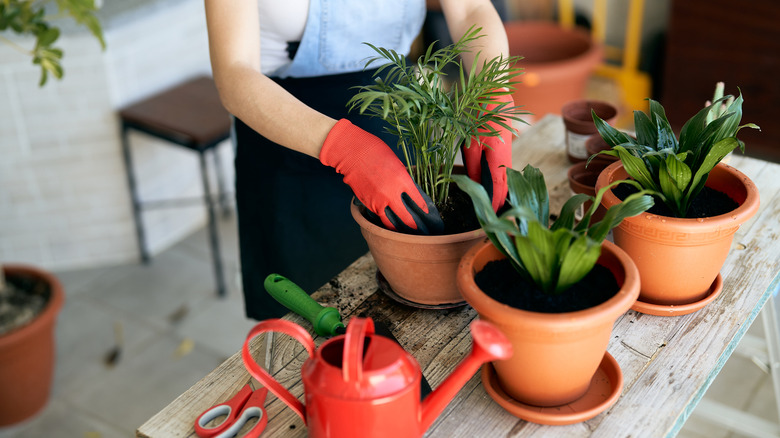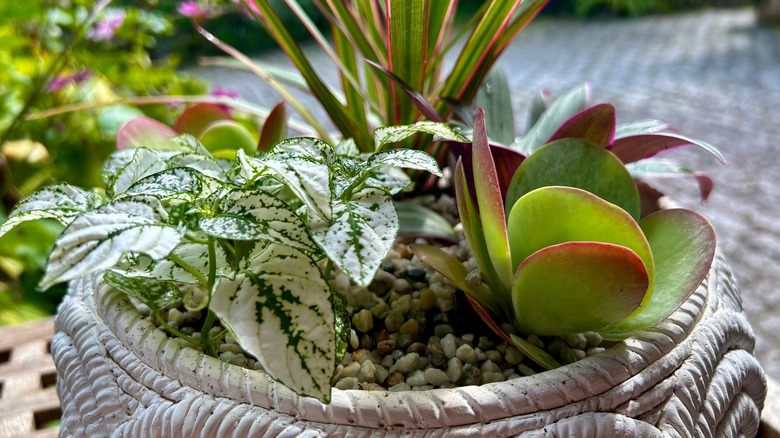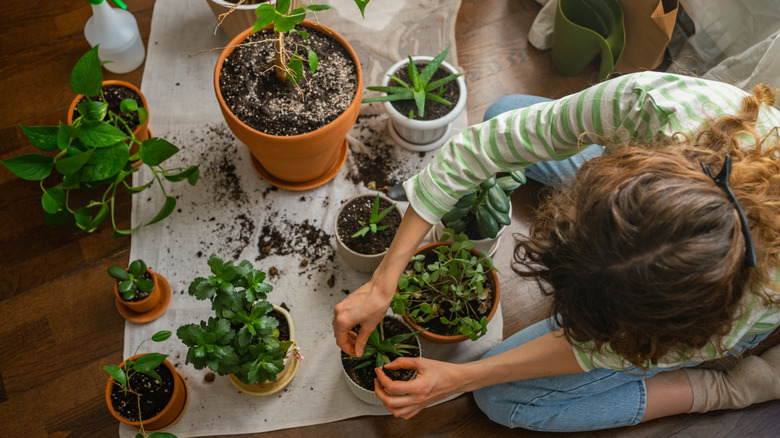The No-Cost Solution You Need For Making Potted Plants Look Fuller
Houseplants can add life and texture to any space, but sometimes, a single plant in a pot looks sparse. If you're working with a large planter or trying to create visual impact on a budget, there's a clever and completely free trick plant lovers are using: combining multiple plants into the same pot to make it look fuller.
If you already own several plants of the same variety, like rubber trees (Ficus elastica), pothos (Epipremnum aureum), or ZZ plants (Zamioculcas zamiifolia), you can group them together in a single pot to create the look of one big, lush plant. It's especially useful when plants are small or you have propagated your plants and have many smaller versions to work with. Instead of waiting months or years for one plant to fill out a container, combining a few into the same space gives you an instant volume boost. This simple, no-cost solution works with everything from houseplants to herbs, and it's especially handy when refreshing a sparse corner, staging a room, or upgrading a planter that feels underwhelming. It can also be helpful when repotting, since consolidating plants into one container may free up pots for other uses or reduce clutter on shelves and plant stands. With the right combination, grouped plants not only look intentional and vibrant but also simplify your care routine, since they are all in one place and likely share similar needs. It's an easy and budget-friendly way to give your space a fuller, more polished look.
How to group plants for a fuller look
Pulling off this trick isn't just about sticking a bunch of plants in a pot. It helps to be a little strategic. The key is choosing plants of the same species or with very similar care requirements. If you're combining rubber trees, snake plants (Dracaena trifasciata), or pothos cuttings, for example, they'll thrive together as long as they get similar light and water. This keeps the grouping healthy and low-maintenance.
If you find that your houseplants need to be repotted, it's the perfect time to do some combining. Start with a container that's slightly larger than you'd typically use, so the roots have room to spread. Arrange the plants with some spacing between them to allow for airflow and growth. Over time, their canopies will fill out and give the appearance of one large, lush plant. You can also stagger heights slightly for a more natural effect.
This method works well for creating focal points indoors, starting with your most dramatic plant, but it's also an excellent solution for outdoor container gardens. Grouping several basil or parsley plants in a large herb pot, for example, can create a full, bushy look in just a few weeks.
Watch out for mismatched plant pairings
While combining plants in one pot is a great way to make them look fuller, not all pairings are successful. Here is how to avoid the common companion planting mistakes that everyone makes when they first start gardening. Combining species with different light, water, or soil preferences can lead to some of the plants failing while others thrive in the same container. For example, cacti and ferns have opposite moisture needs, and trying to meet both in the same container rarely ends well.
It's also smart to avoid pairing aggressive growers with more delicate varieties. Even among similar plants, be mindful of their mature sizes so one doesn't dominate the arrangement. Incompatible pairings often result in frequent maintenance, repotting, or even plant loss. Taking a few minutes to research plant compatibility saves frustration down the line and ensures your arrangement stays healthy. If you're unsure about compatibility, conduct some research to avoid mismatched plant varieties or start with cuttings from the same plant. That way, you'll get a cohesive, full look without sacrificing plant health. Done right, this no-cost solution can bring a designer-worthy touch to your plant collection without spending a dime.


